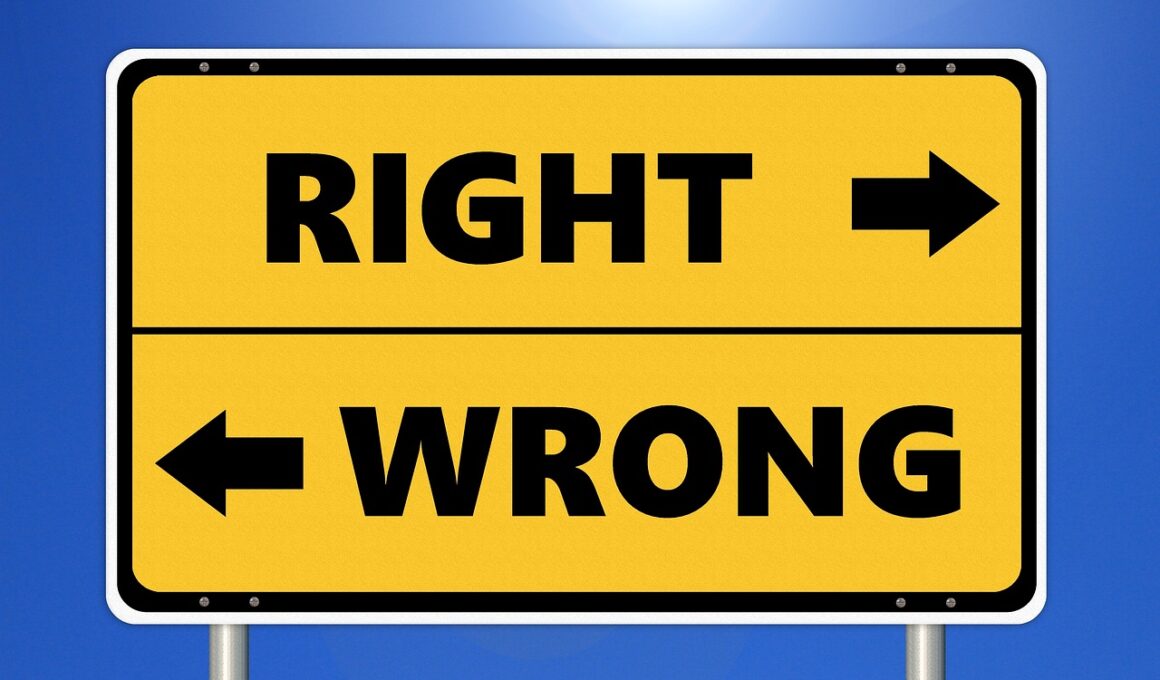The Ethics of Employee Communications in Public Relations
Employee communications serve as the backbone of effective public relations, where transparency and trust play crucial roles. Organizations often face ethical dilemmas when conveying messages to employees. For instance, disseminating honest information regarding company changes is vital. The ethical framework guiding these communications should be built on honesty, respect, and integrity. Ethical communication helps foster a positive organizational culture by encouraging staff members to share concerns openly. Employees who feel informed and valued are more likely to remain engaged and loyal to their organization. Furthermore, ethical considerations involve recognizing the diverse needs and perspectives of employees, making it essential to implement tailored communication strategies. Moreover, companies should ensure that information stays accessible, avoiding the pitfalls of jargon that may alienate employees. This raises the importance of feedback loops within communications strategies, where employees are encouraged to voice their insights. Thus, organizations need to prioritize creating communication channels that promote ethical dialogue and collaboration. Ethical employee communications can significantly enhance overall morale while improving relationships within both internal and external stakeholders. Ultimately, the ethical dimension is an indispensable aspect of effective employee communication in public relations.
Transparent communication serves as a cornerstone in effective employee relations. Organizations must navigate a complex web of challenges when conveying messages. Among these challenges is the potential for misunderstandings and miscommunication. Employee trust can be severely impacted when information is withheld or inadequately explained. Furthermore, organizations that prioritize transparency often significantly mitigate the risks associated with this. Ethical employee communications demand a commitment to honesty at all levels. Misleading information can lead not just to diminished trust, but also to reputational damage for companies. By striving for clarity in messaging, organizations can foster a sense of inclusion and belonging among employees. Creating a culture of openness also encourages better performance and innovation within teams. This means implementing diverse communication methods, such as newsletters, town hall meetings, or digital platforms to facilitate access to information. Using multiple channels ensures that all employees, regardless of their location or role, remain informed. Organizations that seek to excel in public relations should focus on building this trust-centered communication culture. It is also essential to regularly assess communication strategies and responsiveness to employee feedback, enhancing the ethical framework guiding their employee relations.
The Role of Leadership in Ethical Communications
Leadership plays an integral part in establishing a culture of ethical communications within an organization. This involvement is critical for cultivating an environment where employees feel secure in expressing their thoughts and concerns. Ethical leadership extends beyond adherence to guidelines; it embodies the embodiment of values, principles, and visibility. Leaders serve as role models who set the tone for acceptable behavior and communication practices within the organization. When leaders openly discuss values such as integrity and honesty, they encourage employees to mirror these principles in their communication. Transparency in team dynamics strengthens trust and encourages open discussions about divergent perspectives. To create lasting change, organizational leaders must also engage in self-reflection and actively seek to learn from their experiences. Employees tend to emulate the behavior exhibited by their leaders; their commitment to ethical communications sets a precedent for the entire organization. Regular training sessions on ethical practices in communication can highlight the importance of these standards while providing tools for nurturing ethical dialogue. Moreover, involving team members in decision-making fosters collective ownership of ethical communications and strengthens collaboration within the organization.
Following ethical practices also demands accountability and responsibility for communications. Organizations often grapple with the repercussions of poor communication decisions. With the rapid expansion of digital media, information can spread unchecked, leading to misinformation. Inaccurate messaging not only harms employee trust but can escalate consequences in the public domain. Companies must remain vigilant to ensure accurate, consistent information dissemination. This point is particularly vital when addressing sensitive issues, such as restructuring or layoffs. Adopting a proactive approach to communication can ease employee anxieties while reinforcing trust. Addressing rumors quickly with factual information can help prevent unnecessary speculation among employees. Furthermore, companies that uphold accountability and responsibility often demonstrate enhanced corporate social responsibility in their communities. Building a reputation for ethical communications can improve relationships with external stakeholders, including customers and partners. Transparency fosters loyalty, thereby enhancing customer relations and retention. Adopting risk assessment tools can help mitigate the impact of potential communication errors. The ramifications of ethical communications in public relations extend far beyond the organizational framework; instead, they significantly shape the broader business landscape. Companies must understand that fostering trust internally will translate to success externally.
Feedback Mechanisms as Ethical Tools
Feedback mechanisms serve as indispensable tools for promoting ethical communications. Establishing effective channels for employee feedback fosters an environment where voices are heard. Organizations should encourage employees to share their perspectives, concerns, and input openly. Building these channels enhances the inclusivity of the communication process, reinforcing employee trust and engagement. Surveys and suggestion boxes can serve as valuable tools for soliciting feedback and gauging employee sentiment. Furthermore, conducting regular one-on-one check-ins encourages employees to share their views, leading to better insights into their experiences. Feedback mechanisms work best when employees feel confident that their opinions matter and will lead to action. The alignment of communications with organizational values becomes clearer when employees actively engage in discussions. Furthermore, organizations should communicate how they implement feedback to reinforce the value of employee input. It is a significant step toward creating a collaborative culture. Transparency around feedback outcomes demonstrates commitment and respect for employee contributions. This work fosters a sense of community and ultimately enhances morale and productivity. Ethical communications in public relations rely heavily on incorporating employee perspectives into the organizational narrative.
Training and development also align closely with enhancing ethical communication strategies. Establishing ongoing training programs for employees empowers them to understand their ethical responsibilities. These programs should cover topics like respectful communication, diversity awareness, and conflict resolution. By equipping employees with the knowledge and skills needed to navigate ethical dilemmas, organizations reinforce their commitment to ethical considerations. Regular workshops can enhance awareness and understanding around areas such as unconscious bias, which may impede effective communication. Furthermore, organizations must ensure that leaders and managers receive tailored training focused on effective communication skills. This investment creates a ripple effect, affecting the entire organization positively. Moreover, maintaining a current understanding of ethical communication trends is central to adapting to emerging challenges. Remaining proactive in adapting communication strategies helps address societal shifts that influence employee perspectives. Employers should continuously assess the effectiveness of their training initiatives to ensure relevance and impact. By fostering an environment that values continued learning, organizations enhance their communications landscape while creating a culture capable of addressing any arising ethical challenges. Ultimately, cultivating an ethical communication-driven workforce positions organizations for sustained success.
Conclusion: The Impact of Ethical Communications
The impact of ethical communications on public relations cannot be overstated. Organizations that embrace these principles often cultivate loyal, engaged teams that drive success. Employee perceptions of their organizations are greatly influenced by the effectiveness of internal communications. Consequently, ensuring that ethical practices are central to messaging enhances overall morale. Employees who feel informed are more likely to exhibit higher levels of productivity and satisfaction in their roles. A commitment to ethical communication sets the foundation for broader organizational success and stability. Furthermore, companies that prioritize ethical values often attract top talent. Prospective employees actively seek work environments where integrity and transparency are valued. This becomes a strong motivational factor for new applicants. Ethical communications extend an organization’s reputation beyond its walls, establishing credibility and trust with external stakeholders. In an age of increasing transparency, good ethics in communication are essential more than ever. Adopting a strong ethical framework for employee communications equips organizations to face challenges while maximizing opportunities. By prioritizing this approach, businesses not only boost their internal dynamics but also enhance their relationship with the public, which is essential in the realm of public relations.


